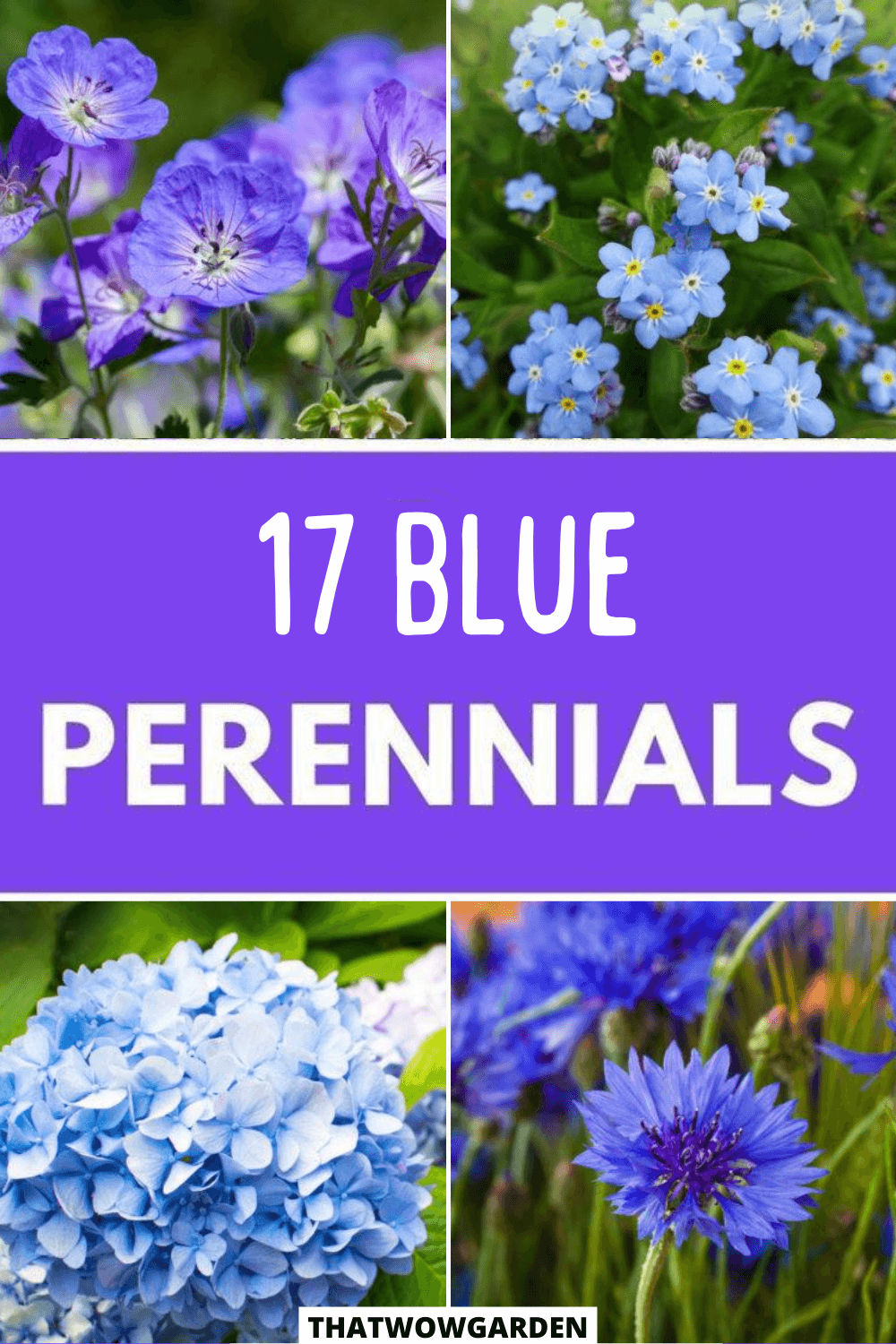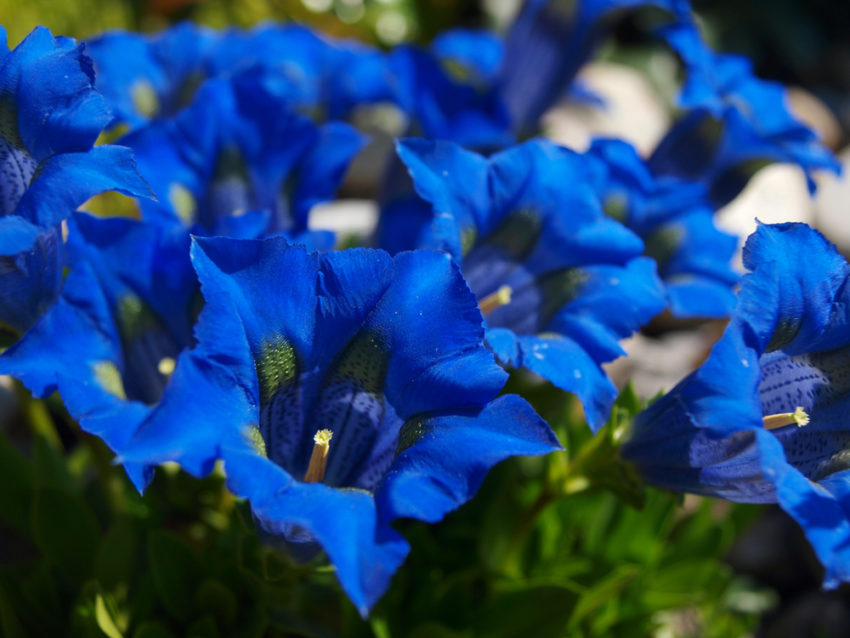Before I embark on this article, listing out the choicest of plants that produce blue blooms- let me let you in on a little secret. Blue flowers, really blue ones are surprisingly rare. Out of around the 3,00,000-odd different specimens of flowering plants, only around 10 per cent are blue.
Blue is a favourite with me. But even allowing for my personal bias, I do strongly believe that blue flowers occupy a league of their very own. They exude a sense of peace and calm, are radiant in the sun and in the shade and are generally gorgeous. Add to it, the different variations of colours you can choose from- turquoise, teal, navy, sky.
Blue flowers are never a bad decision and are sure to brighten up even the most dreary gardens.
1. Delphiniums
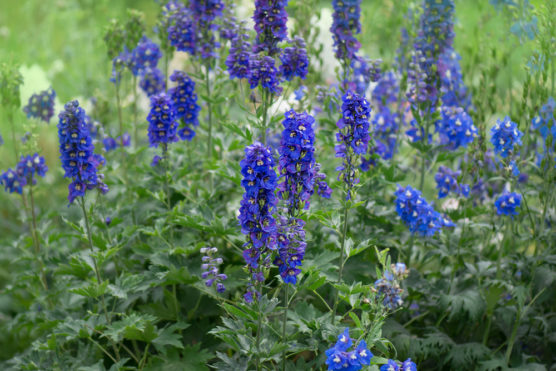
Tall perennials that produce flowers in blue (and sometimes mauve), this plant is quite the grower and is known to reach up to 3-4 feet tall. Support is recommended, whether that involves tying up stray branches, adding sticks or laying on the foundation thick every once in a while.
The flowers themselves are quite exquisite and grow in clusters, angled in a slightly outward direction.
2. Aconitum ‘Arendsii’
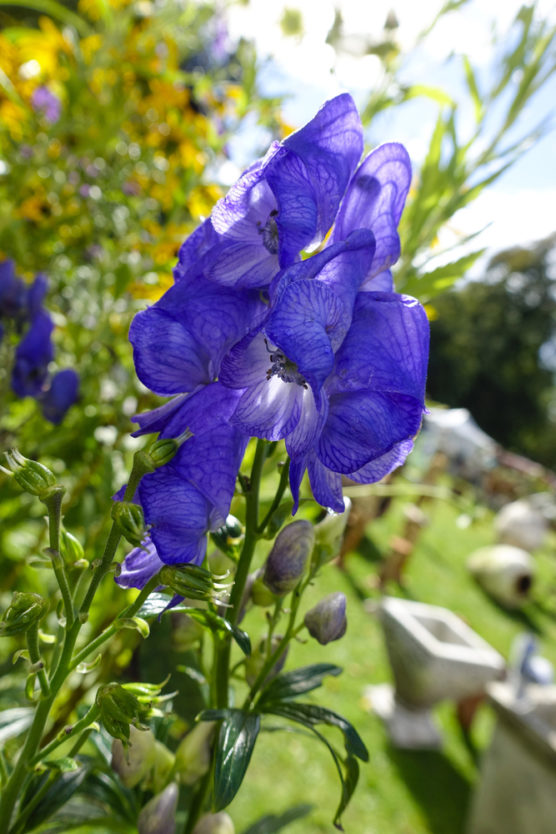
Autumn-growers, this flowering plant is also popularly known as Monkshood. The colour of the flowers are a curious shade- they are indigo blue with a hint of purple that is more apparent during the day. A welcome departure from the traditional reds and oranges that characterize fall, Monkshood grows fast, likes the shade and blooms until late October.
3. Baptisia
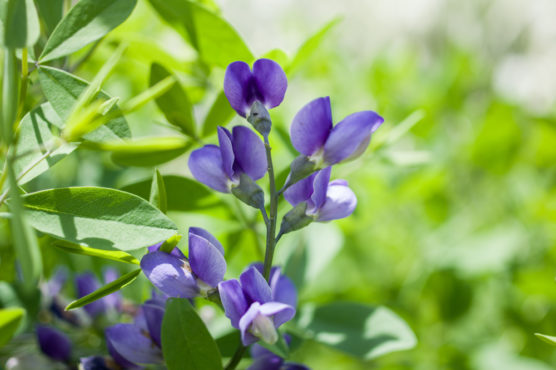
Blue with an undertone of green, Baptisia grows spires of pea-like flowers that bloom during the summer months of May and June. They can grow up to be two feet tall, with the flower at the tip gradually emerging as a statuesque unfurled creation.
Baptisia grows both in the sun and the shade but is slightly more inclined to prefer the sun. Well-drained soil is a prerequisite.
4. Geraniums
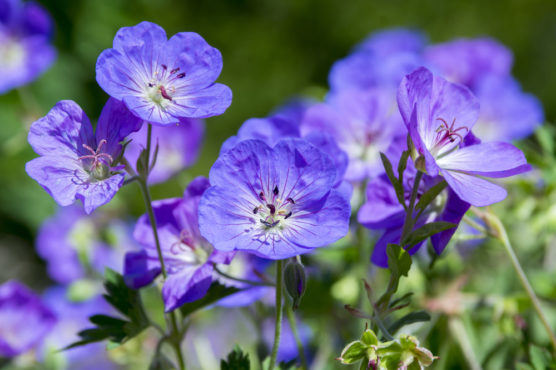
Geraniums are popular choices with gardeners are known for their low-maintenance. durable qualities. They are low-level plants and spread quickly and easily- dotting flowerbeds and meadows in no time at all.
The flowers are pale blue and have delicate papery petals.
The two most common varieties are Rozanne and Johnson’s Blue. Fond of the sun, both the types bloom in May-June and have only a small difference in height.
5. Centaurea Montana
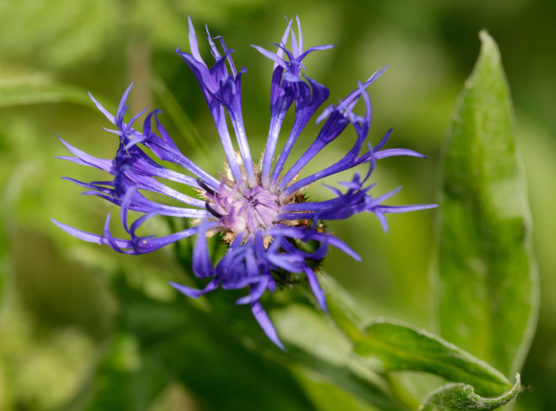
A farmland favourite, the Centaurea Montana is distinctive and full of whimsy.
The plant grows up to 18 inches tall, averaging at 12 inches and has leaves that are an odd shade of grey-green and have a furry texture. The flowers are brilliant and blue.
A summer flower, the flowers enjoy and flourish in the sun.
6. Pulmonaria
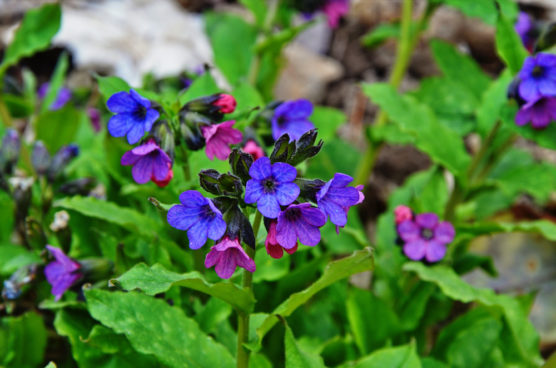
An early bloomer, the pulmonaria sports lush, lance-shaped leaves that have silver spots and edges and deep blue flowers that change colour with the progression of spring. Blue changes to violet, which then lightens to a faded rose before the flower withers.
Not a very tall plant, the pulmonaria can often look rather diminutive- preferring the shade, and twisting in a not quite upright position.
7. Dwarf Crested Iris
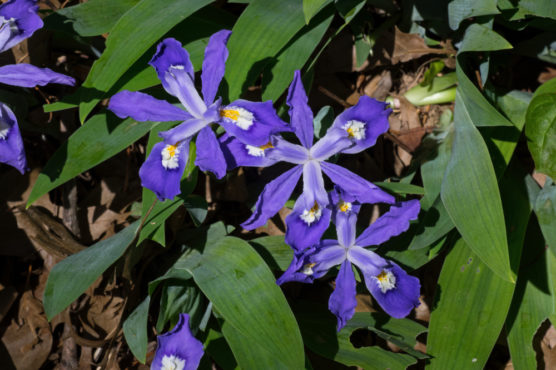
Small but abundant, the dwarf crested Iris is the ideal plant choice for shade gardens.
It is easy to grow and can grow in both the shade and the sun. It grows up to 6 inches tall and in closely-nested clusters that spread out horizontally.
The flowers are small and amethyst-blue in colour.
8. Nepeta ‘Walker’s Low’
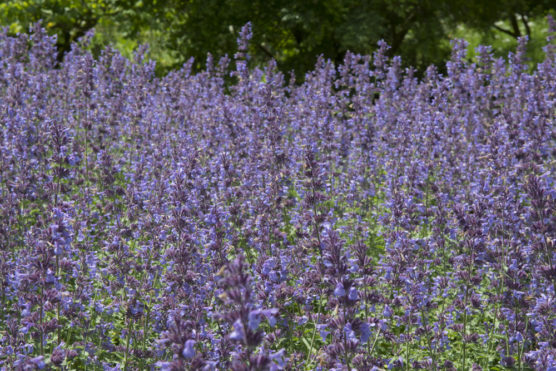
Think clusters of violet-blue flowers nestled amidst foliage that is a striking shade of green tinged with grey.
Known for both its velvety textures and lush hues, the Walker’s Low is aromatic and is known to grow in mounds, separated by distances not more than a few feet.
It blooms from spring to fall and is remarkably easy to maintain and care for.
9. Platycodon
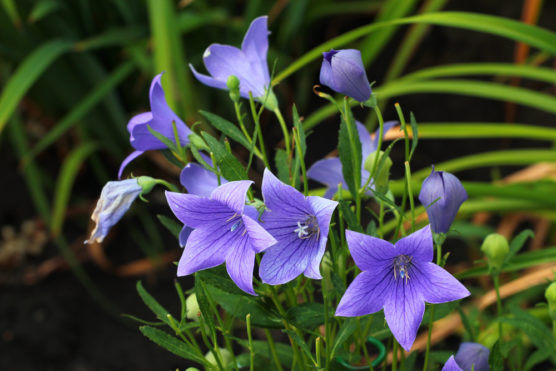
Also known as Fuji Blue, Platycodon is a beautiful flowering plant that sprouts balloon-like buds in the starting days of summer. The buds mature by July-August, growing into five-lobed, bright blue flowers.
Platycodon enjoys the sun and thrives in it. Proper irrigation is also important, along with ensuring that the soil does not, at any point, get over-saturated.
10. Asters
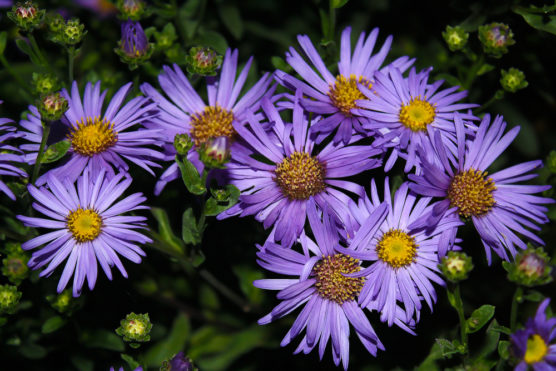
Albeit grown in a wide variety of colours, blue asters are in a league of their own. Large and exuberant, they also simultaneously embody fragility and grace.
The petals are slim and vibrant- usually in a deep shade of blue. Sometimes referred to as frost flowers because of florists’ predisposition to use asters in flower arrangements that are fall or winter-themed, asters bloom in the cooler months.
11. Hydrangea
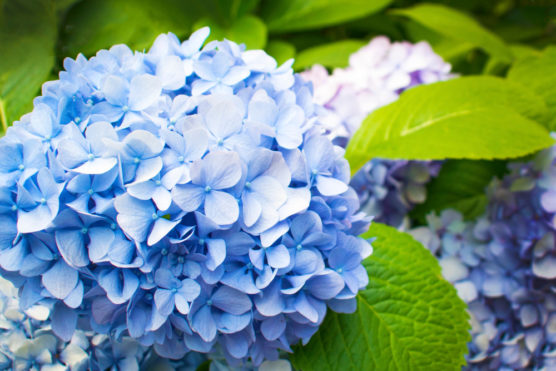
One of those flowers that are inherently, naturally blue- hydrangeas can also change colour. This colour-changing phenomenon is put down to the pH of the soil it is planted in- certain pH values favour blue, while others may favour pink or white.
Experts recommend that hydrangeas be grown in pots and containers than in flowerbeds, for the former allows one to more easily be able to regulate the pH levels of the soil.
12. Columbine
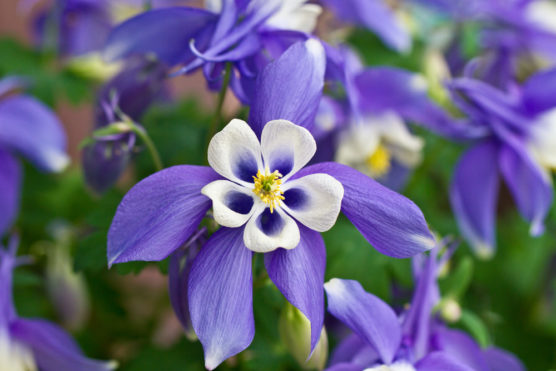
An easy to grow perennial, Columbine flowers are a shade of blue that is a cross between mauve and indigo. It is sometimes double-layered- the outer flower has blue, papery petals while the flower on the inside is smaller and white.
Columbine favours cooler climes and grassy hills. It is a favourite of small pollinators, especially hummingbirds.
13. Globe Thistle
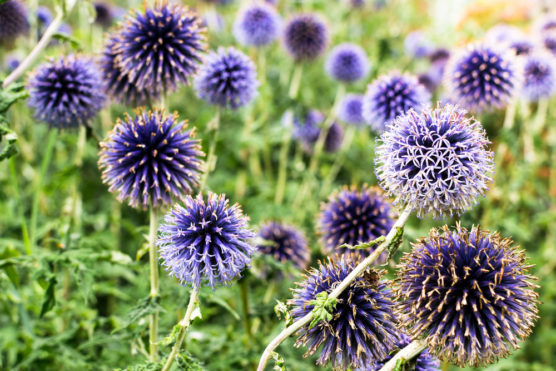
Shaped like a globe and dotted with thistles, the name for this plant explains itself. What is not obvious from the name itself, however, is the unique blue the globes sport or the fact that this is one of those rare plants that dry well- retaining much of its original colour long after it has been snipped off.
The globe thistle is popular with bees, butterflies and birds alike.
14. Bellflower
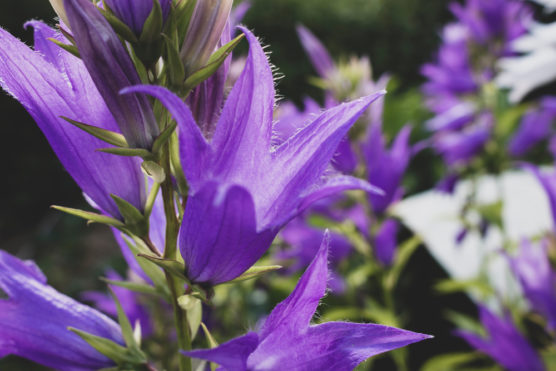
Bell-shaped blooms that are violet-blue. The texture of the petals is interesting- the film is thin and delicate but also peppered with lines that run deep.
Sunshine is a prerequisite necessary for the plant to thrive, as is the presence of well-drained soil.
15. Forget-me-Not
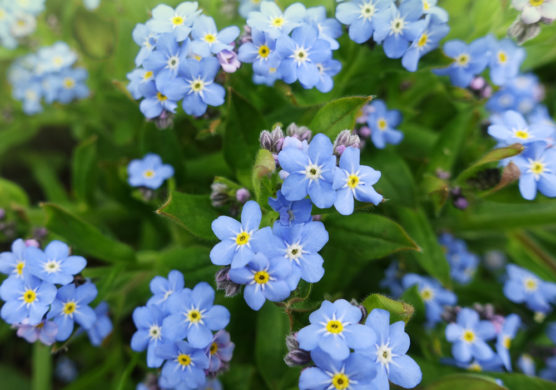
Who does not recognize the minuscule yet expansively charming flower that is a Forget Me Not?
Appropriately named, Forget Me Nots are five-petaled wildflowers, that are formed cleanly and precisely after you look past the seeming disarray. The blue color it sports is distinctive, a pale blue that can sometimes appear to be violet.
Forget Me Nots like damp, shady areas and grow in well-formed clusters.
16. Gentian
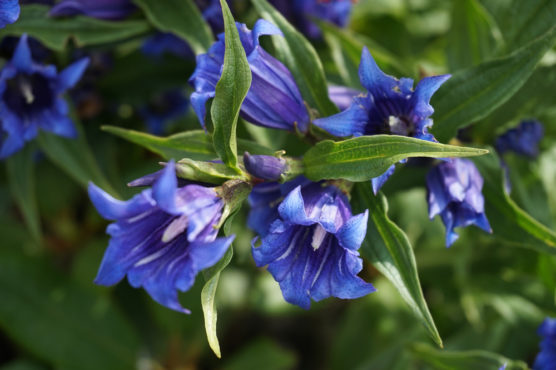
Another true-blue, gentians are low-laying flowers that usually adorn mountain meadows. They can be rather tricky to get right- a careful mix of sun and shade and rain is the key, but they are absolutely beautiful to look at.
Tubular and deep blue, every gentian plant grows around 4-5 flowers in close proximity.
17. Cornflower
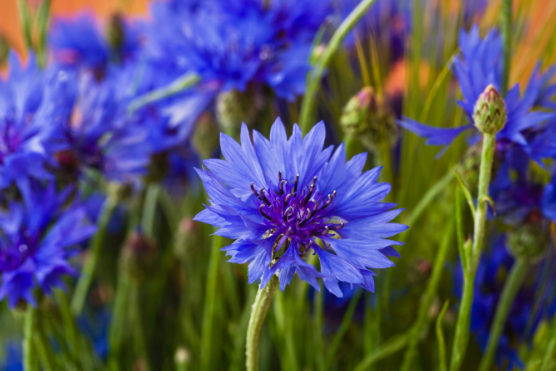
The springy cornflower gets its name from cornfields- a place which saw their advent. Of course, they were little more than weeds then.
Years later, the cornflower is a highly sought-after plant, easy to look after, pleasant to look at and available also as annual variety.
The petals are wispy and numerous- each flower has around 10 or 12.
There are other plants with blue flowers, quite a few of them. Some of them are finicky, some temperamental, some very easy to grow and cultivate. Each flower, each plant comes with their own distinct properties- little quirks that set them apart, define them.
I have always maintained that a garden should reflect the gardener, in ways more than one. It is with the same advice that I leave you, in the hopes that when you pick a blue flower to grow in your garden, you pick one that fits you right.
